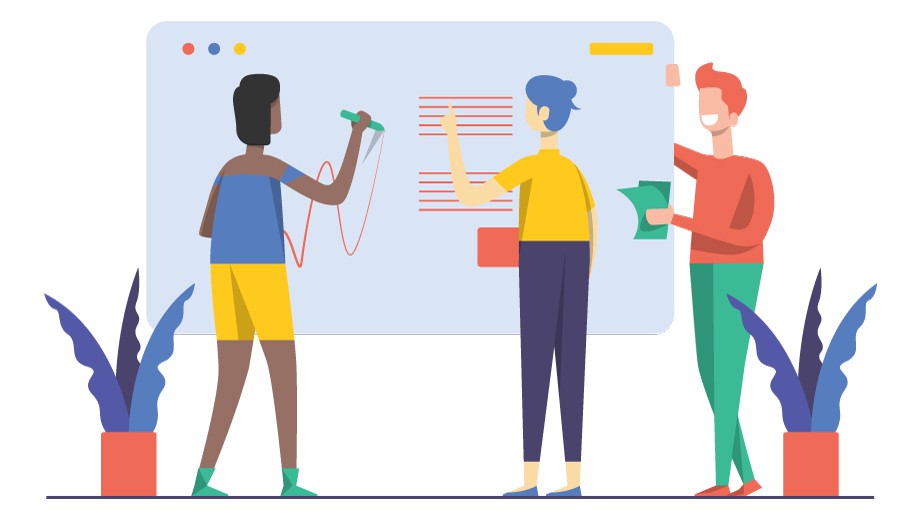Principles and rules of facilitation
Principles and rules of facilitation Is it easy for you to lead the process of discussing work issues? Plenary sessions, conferences, meetings – any type of meeting in which people speak in a strictly defined order is inevitably excluded from the discussion process while waiting for their turn. As a result, many ideas are not voiced, not all possibilities are considered. At best, people begin to get bored, and at worst, irritation and dissatisfaction with the result appear. The method of facilitation will come to the rescue.
It is a tool that can be used during meetings, strategic planning sessions, seminars and workshops. We understand the intricacies of the tool below.

What is facilitation
Facilitation (from the English facilitate – to help, guide, facilitate) is at the same time a process, a group of skills and a set of tools that allow you to effectively organize a group discussion.
The goal of facilitation is to find the right method that will allow the group to work creatively and effectively. In other words, these are special actions aimed at organizing group work.
Discussion of work issues usually takes place in one or more groups. Group facilitation is a process in which the leader of the group takes a neutral position and does not assume decision making, but only helps participants identify problems and make a decision through constructive discussion. This leader will be the facilitator.
Business rebuild
Who is a facilitator
The personality of the facilitator is already a powerful tool of influence in itself. This is a trainer who is trained in effective communication technologies. According to Tony Mann (author of several books on facilitation), a facilitator should be able to:
- direct and structure the discussion in the right direction;
- to select really successful solutions of the group;
- take risks, go out yourself and take facilitation participants out of their comfort zone;
- work with different kinds of groups;
- navigate in all formats of conversations and meetings;
- combine different tools and techniques in the process of working with a group;
- quickly respond to changes in the situation, the difficulties of the participants – and, accordingly, quickly overcome them;
resist stress; - open up to people, motivate them for personal change.
A professional puts the interests of the group above all, refusing his own expertise, does not allow the participants to get stuck in the discussion, but at the same time does not force events and does not put pressure on the participants. He is responsible for organizing the discussion, allowing the participants to fully focus on the content of the object of discussion.
Important! The facilitator maintains a constructive dialogue and gives equal attention to all participants in the discussion, effectively managing the discussion, but not joining it. The result of such a meeting is that the group makes the best possible decision.
The difference between facilitation and moderation
There are different views on what facilitation and moderation are. Some experts recognize them as the same processes, and the difference in terms is explained by different linguistic origins (moderation – German, facilitation – English). Other specialists find these processes related, but having differences:
- Facilitation literally means “facilitate”, moderation – “curb”. Moderation is a tougher technology. It has a defined format – a conversation, during which there is no opportunity to be distracted by another topic.
- Facilitation is a flexible technology. In the process, many different techniques and tools are used: sketches, collages, even Lego constructors. Participants are not limited to one topic.
- Moderation is used in the format of a meeting: “discussion of the problem”, a meeting with the head.
Facilitation is suitable for resolving conflict situations, making difficult decisions and introducing new technologies.
Five rules of facilitation
Facilitation involves the use of principles that come from the goals and objectives set.
There are 5 rules of facilitation:
- study of the process as opposed to omniscience;
- openness and sincerity to people;
- all participants in the process are equal;
- every opinion is important;
- all people are smart and can solve problems effectively.
Facilitation Techniques
There are many facilitation tools, but there are several basic techniques:
Future Search (“Search for the future”). Technology is used when a company’s various stakeholders need a common framework to collaborate and create the future of the entire organization.
Work Out (“Out of scope”). The method is used to develop innovative ways of interacting, overcoming the bureaucratization of the company, improving business processes and the ability to achieve the results that the company needs.

Brainstorming (“Brainstorm“). The method is used when it is necessary to summarize the available information and find new, fresh ideas.
Polarization of opinion (“Polarization of opinions”). The method is used when it is necessary to reduce / “pour out” a negative attitude towards a topic that will be discussed further; it is necessary to determinepessimistic and optimistic forecast of the development of the situation.
Open Space (“Open space”). The method is used when a large group of employees needs to answer many specific questions or find solutions to problems within the same topic.
